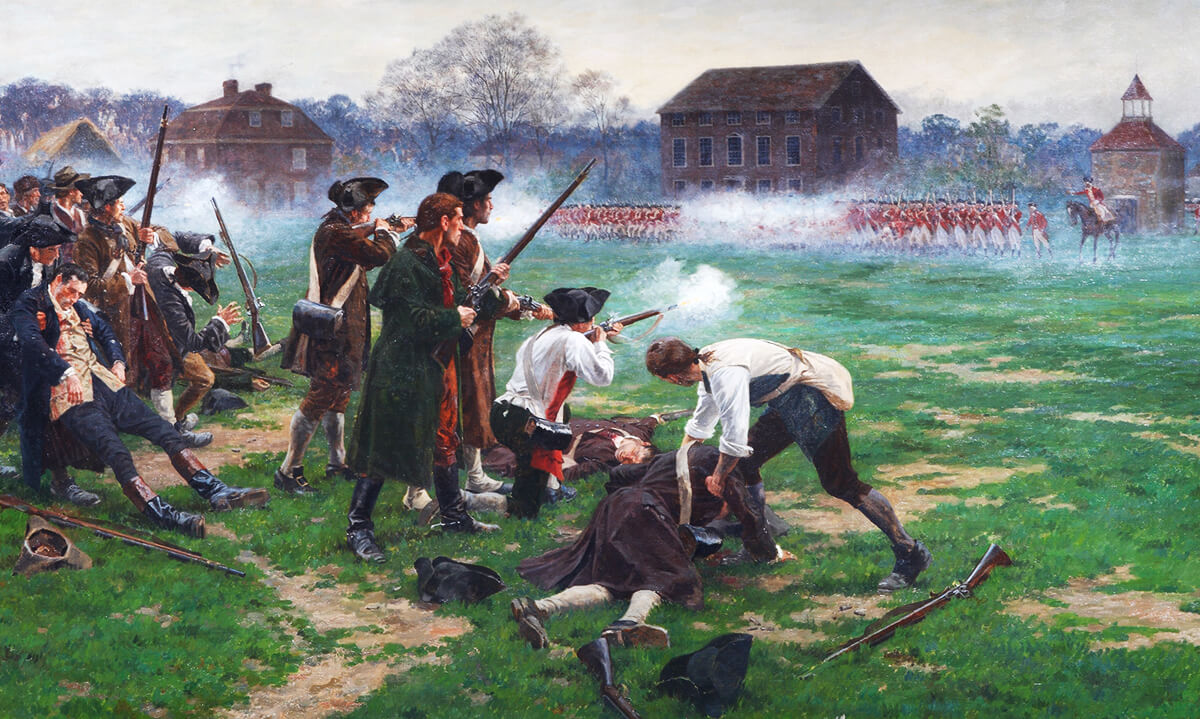What these four have in common is that they were all chaplains; all four loved and served God; and all four voluntarily sacrificed their own lives to help soldiers survive the sinking of the U.S.A.T (United States Army Transport) Dorchester.
In the midst of World War II, the Dorchester, moving troops from America to Europe, was approaching Greenland when it was torpedoed by a German submarine just after midnight on February 3, 1943. Within twenty minutes of being struck, it plunged beneath the black and icy waters of the North Atlantic. 1
In those twenty minutes, with the pitch dark, the cries of the wounded coming from every direction, and the severe lurching of the ship as it filled with water, chaos and pandemonium reigned. But four chaplains (Lt. Alexander Goode, a Jewish Rabbi; Lt. Clark Poling, Dutch Reform; Lt. George Fox, Methodist; and Lt. John Washington, a Catholic priest) took charge and quickly brought a sense of calm and assurance to the soldiers aboard the sinking ship.




The chaplains moved among the soldiers, “calming the frightened, tending the wounded and guiding the disoriented toward safety.” 2 One survivor testified, “I could hear men crying, pleading, praying. I could also hear the chaplains preaching courage. Their voices were the only thing that kept me going.” 3 They helped the men get into life jackets and off the boat. And when the life jackets finally ran out, these four Army chaplains took off their own vests and gave them to other soldiers to make sure they would be safe 4 (only 230 of the 902 on board survived).
As the Dorchester finally slipped beneath the frigid Arctic waters, survivors in the lifeboats testified  that the last thing they saw was the four chaplains standing together on the submerging deck – a Jew, a Methodist, a Catholic, and a Dutch Reformed – their arms locked together and their voices raised in prayer and song as the ship forever slipped beneath the freezing waters. 5
that the last thing they saw was the four chaplains standing together on the submerging deck – a Jew, a Methodist, a Catholic, and a Dutch Reformed – their arms locked together and their voices raised in prayer and song as the ship forever slipped beneath the freezing waters. 5
In 1948, President Harry Truman arranged for a special postage stamp to memorialize the four, 6 and three years later in 1951, he spoke at the dedication of the Chapel of the Four Chaplains in Philadelphia, 7 telling the nation:
This chapel commemorates something more than an act of bravery or courage. It commemorates a great act of faith in God. The four chaplains whose memory this shrine was built to commemorate were not required to give their lives as they did. They gave their lives without being asked. When their ship was sinking, they handed out all the life preservers that were available and then took off their own and gave them away in order that four other men might be saved. Those four chaplains actually carried out the moral code which we are all supposed to live by. They obeyed the Divine commandment that men should love one another. They really lived up to the moral standard that declares: “Greater love hath no man than this, that a man lay down his life for his friends” [John 15:13]. They were not afraid of death because they knew that the Word of God is stronger than death.
Their belief, their faith, in His word enabled them to conquer death. 8
WallBuilders’ Collection includes an original card signed by President Harry S. Truman with his declaration that the sacrifice of the four chaplains was “an heroic event without parallel.”
President Truman, throughout his administration, was outspoken about the importance of Biblical faith. A confirmation of this is evident in another of his documents that we own — his proclamation for a day of prayer and thanksgiving at the surrender of the German Army on V-E Day (May 8, 1945).
As part of that call to prayer, President Truman urged Americans:
I also call upon my countrymen to dedicate this day of prayer to the memory of those who have given their lives to make possible our victory. 9
We, too, should be grateful for the sacrifice of the valiant men and women from throughout our nation’s history who have been willing to lay down their lives to protect our nation and the God-given freedoms we enjoy.
Endnotes
1 John Brinsfield, “Chaplaincy History: The four chaplains,” U.S. Army, January 28, 2014. See also, “The Saga of the Four Chaplains,” The Four Chaplains Memorial Foundation, 2008.
2 John Brinsfield, “Chaplaincy History: The four chaplains,” U.S. Army January 28, 2014. See also, “The Story of the Four Immortal Chaplains,” United States Army War College Memorial Chapel (accessed on: February 7, 2014).
3 “The Saga of the Four Chaplains,” The Four Chaplains Memorial Foundation, 2008. See also, WWII Informational Fact Sheets (Department of Defense: 1995), p. 14, “Fact Sheet: Four Chaplains.”
4 “The Saga of the Four Chaplains,” The Four Chaplains Memorial Foundation, 2008. See also, Stanley Brewer, “S.S. Dorchester,” Great Ships (accessed on: February 7, 2014).
5 John Brinsfield, “Chaplaincy History: The four chaplains,” U.S. Army January 28, 2014. See also, Congressional Record (Government Printing Office: Washington, D.C., 1988), V. 144, Pt. 1, p. 72, January 27, 1988.
6 Harry S. Truman, “Informal Remarks in San Francisco,” The American Presidency Project, June 13, 1948.
7 Harry S. Truman, “Address in Philadelphia at the Dedication of the Chapel of the Four Chaplains,” The American Presidency Project, February 3, 1951. See also, Carol Devlin Gadsby, “My Memories of the Chapel of the Four Chaplains,” Grace Baptist Church of Blue Bell, March 2, 2008; James W. Hilty, Temple University: 125 Years of Service to Philadelphia, the Nation, and the World (Temple University Press: Philadelphia, PA, 2010), p. 15.
8 Harry S. Truman, “Address in Philadelphia at the Dedication of the Chapel of the Four Chaplains,” The American Presidency Project, February 3, 1951.
9 Harry S, Truman, Proclamation of the President: Victory in Europe; Day of Prayer, WallBuilders, May 9, 1945.
Still looking for answers? Visit our FAQ page
More Resources
Know the Truth and Protect Your Freedoms.
Still looking for answers? Visit our FAQ page
Stay Informed with the Latest Resources
Enter your email address to receive our regular newsletter, with important information and updates right in your inbox!

 Their belief, their faith, in His word enabled them to conquer death.
Their belief, their faith, in His word enabled them to conquer death. 








